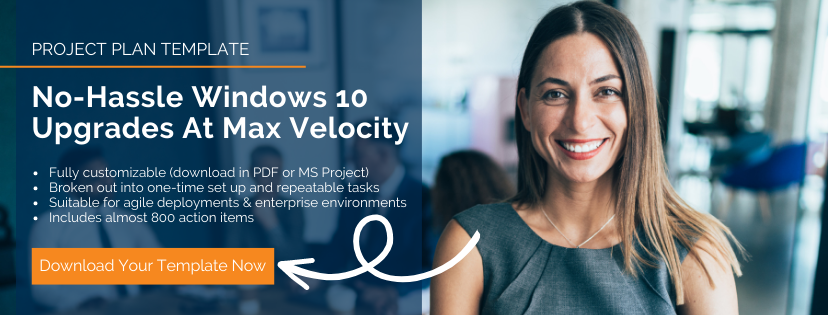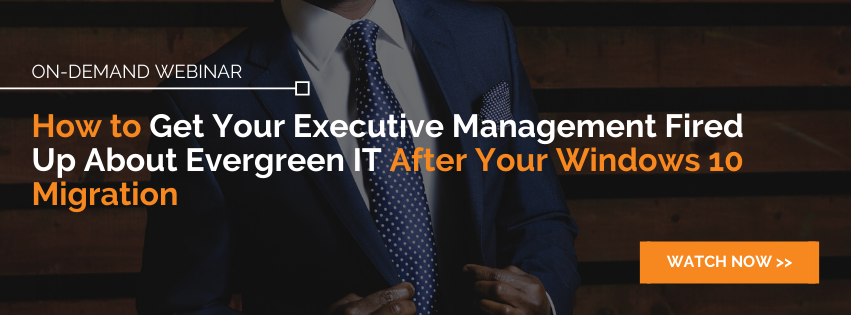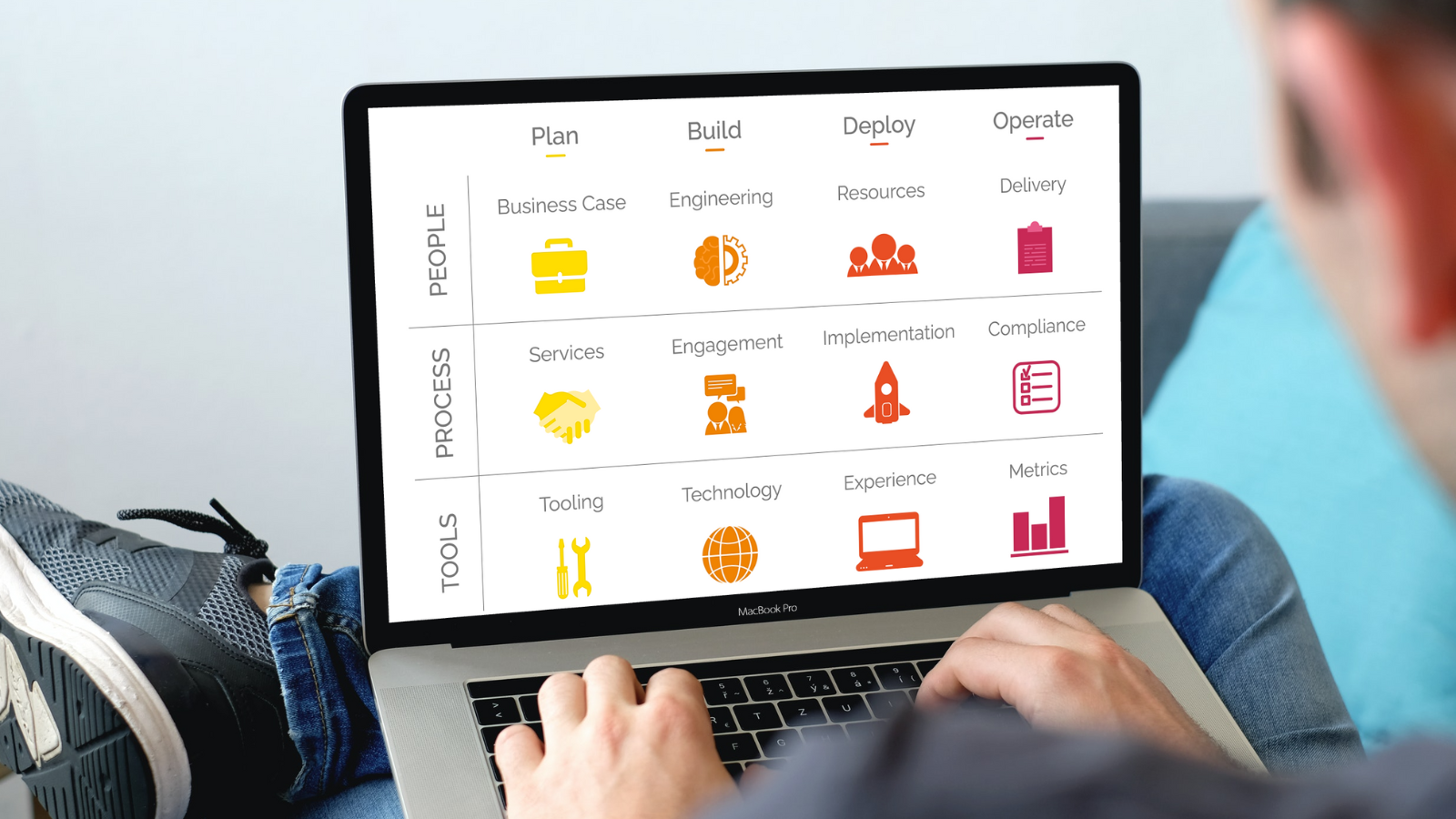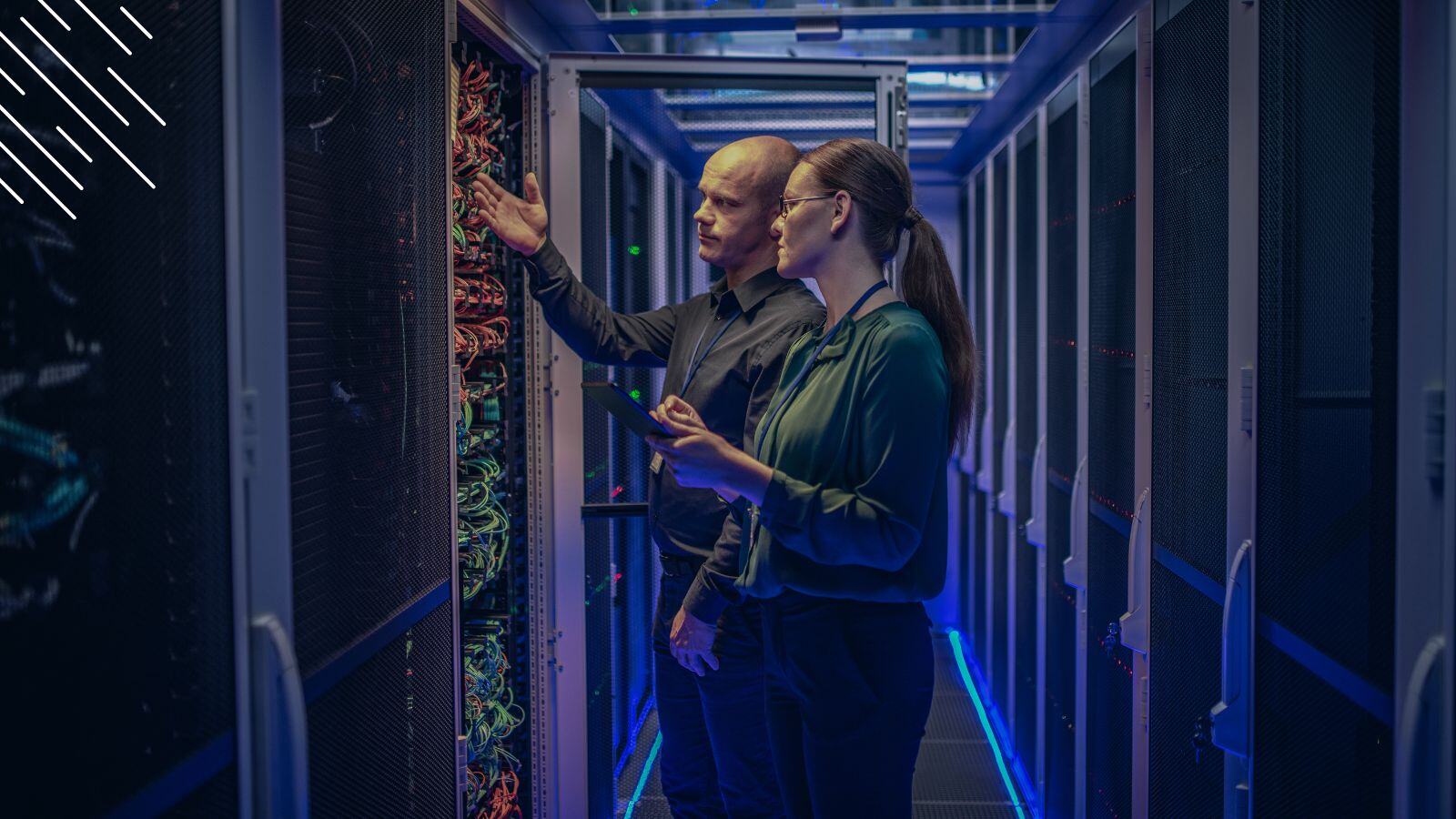
If you have read any of our content before, you know that having a repeatable, industrialized process is the very foundation for Evergreen IT Management success. By now, most organizations have dipped their toes into Evergreen IT by creating such a process for Windows 10 Servicing, and after more than five years since the release of the first Windows 10 version, the vast majority of organizations should have a good idea of what the process should look like or better, have a formalized process in place.
The million dollar question now becomes this: How do you take that Windows 10 process and tailor it for all Evergreen IT use cases, such as hardware refresh, Office 365 ProPlus Servicing, VDI migration, application lifecycle management, and many more? All of those use cases have different workflows, inputs, outputs, milestones and KPIs!
That's where our Evergreen IT Process Framework comes in. Based on our extensive experience empowering dozens of enterprise-size customers with our Evergreen IT Management tool, we have developed a standardized and largely automated process framework that not only can be used to manage all Evergreen use cases, but is specifically designed to drive your cycles at maximum velocity by utilizing mathematical algorithms.

Our Evergreen IT Process Framework breaks the entire process into five distinct steps: Inventory & Analysis, Assess & Prioritize, Ready, Schedule, and Deploy. In essence, the goal of the framework is to give you a structured process that looks at all of your in-scope elements and then allows you to determine which factors are your bottlenecks. For example, for a Windows 10 Servicing project, you will need to determine which applications need to be tested or remediated first to drive deployment velocity for the largest possible user or device base. Then you run through your readiness tasks before you head into scheduling and deployment. After deployment is completed, you wrap up the current cycle and prepare for the next.
The graphic above visualizes those steps using the example of a Windows 10 Servicing project, but this Evergreen IT Process Framework can be used for all use cases. Let's have a closer look at each of the steps in more detail.
1) Inventory & Analysis
In this first step, you are running through your discovery and inventory process. The elements you are looking at will differ depending on which use case you are working on. For example, for a hardware refresh, you are interested in knowing the warranty or lease dates for your device(s), whereas for an application life cycle project, you will need to know how many different applications and application versions are currently installed in your environment, what the usage of those apps is, and so on. Essentially, this step allows you to gain a clear understanding of the exact scope of your project.
2) Assess & Prioritize
Now that we know the scope of your Evergreen IT cycle, it is extremely useful to first assess and prioritize your next steps before diving right in. For example,
-
For a Windows 10 to 10 upgrade, you want to know if you have enough disk space on the hardware to receive the upgrade, whether all of the drivers on a particular machine are going to work, and whether your applications are compatible for the upgrade.
-
For a hardware refresh program, you would look at the warranty dates and lease dates of all devices to determine which devices are due to be refreshed and therefore in scope.
-
For a mobile OS upgrade cycle, you will look at which OS your devices are running to decide which are in scope for the upgrade before determining which devices can take an upgrade and which ones can't.
After assessing the inventory to determine the scope of our Evergreen IT cycle, we would then proceed to prioritize our elements based on mathematical algorithms to achieve maximum velocity. For example, for a
- Windows 10 Servicing project, you would find and assign specific devices to your Windows Deployment Rings to get the most application coverage which in turn allows you to migrate the most devices.
- Hardware refresh cycle, you might need to go by hardware availability in certain regions and bundle those together accordingly.
- Application retirement or rollout, we are looking for which application dependencies can be remediated with the highest impact in terms of moving us forward,
- and so on.
Whatever use case you are working on, the goal is to achieve the fastest velocity by eliminating the most impactful bottlenecks which then allows you to switch the most assets to green as soon as possible.
3) Ready
Next, we work through our readiness tasks associated with each program. Again, specific tasks depend on the Evergreen IT use case you are working on. For example for:
- Windows 10 Servicing: we need to consider application readiness (e.g., new package availability), hardware procurement/compliance, business unit readiness, asset pre-requisites, etc.
- Hardware readiness might be location and asset readiness or vendor readiness for supporting an engineering depot or a location where employees can bring their devices for replacement.
- For application rollouts, like the Office 365 ProPlus client upgrade, we will need to ensure hardware readiness in terms of disk space and application readiness.
Once all readiness tasks are completed, we can move on to the actual scheduling and deployment.
4) Schedule
Over the past few years, enterprises have experienced a culture shift towards self-service. Depending on the type of Evergreen project you are working on, you might be able to leverage self-service. Those organizations that empowered their employees to be active participants in the migration process through self-service (e.g., by allowing users to volunteer for migration dates) have benefited from a better Employee Technology Experience as well as higher user satisfaction!
Another very important element to your scheduling and deployment process is end user communication. Depending on your use case and end user involvement, communication needs to be handled differently. For example, you might ask your users to bring their laptops into the hardware depot for a refresh. Or you could ask your users to decide when they want the upgrade once they're ready if you are doing an in-place upgrade as part of your Windows 10 Servicing.
Generally, each cycle can easily translate to four to seven emails per user. If you have an estate of 25,000 users, this means anywhere between 100,000 to 175,000 emails that need to be sent and tracked. You will want to make sure your self-service and end user email communication work hand-in-hand, are part of your centralized command and control mechanism, and are as automated as possible — like you can with Juriba's Dashworks.
Sometimes, we must interface with third-party approval systems or service request systems. For a hardware refresh, for example, you can integrate with tools like ServiceNow to action the data into the procurement systems. This can trigger a procurement request or a service request.
5) Deployment
Naturally, the actual deployment will look very different for each use case. It could be anything from a centrally managed or self-service initiated in-place upgrade to a laptop replacement where employees have to come in physically. Depending on your use case, you will deploy using a push or a pull methodology to finish your cycle. After a successful deployment, you wrap up and start the cycle again.
Conclusion
In summary, the Evergreen IT Process Framework provides IT managers with a standardized process framework to manage highly efficient, largely automated and therefore significantly accelerated Evergreen IT Management cycles over and over again. It starts by taking inventory. Then it analyzes the current situation and assesses potential opportunities and obstacles to mathematically calculating the best route by prioritizing certain elements. Once this step is completed, the process moves into a smooth readiness, scheduling, and deployment phase.
This process framework can be used by any IT manager with or without implementing Juriba's Evergreen IT Management solution, Dashworks. However, implementing the Evergreen IT Process Framework in conjunction with Dashworks is an extremely powerful combination as Dashworks is the executive engine and the central command and control center for effortlessly managing and automating much of this process.
Barry is a co-founder of Juriba, where he works as CEO to drive the company strategy. He is an experienced End User Services executive that has helped manage thousands of users, computers, applications and mailboxes to their next IT platform. He has saved millions of dollars for internal departments and customers alike through product, project, process and service delivery efficiency.
Topics:




![What is a Digital Workplace? [Definition]](https://blog.juriba.com/hs-fs/hubfs/What%20is%20a%20Digital%20Workplace%20%5BDefinition%5D.jpg?width=1600&height=900&name=What%20is%20a%20Digital%20Workplace%20%5BDefinition%5D.jpg)





















